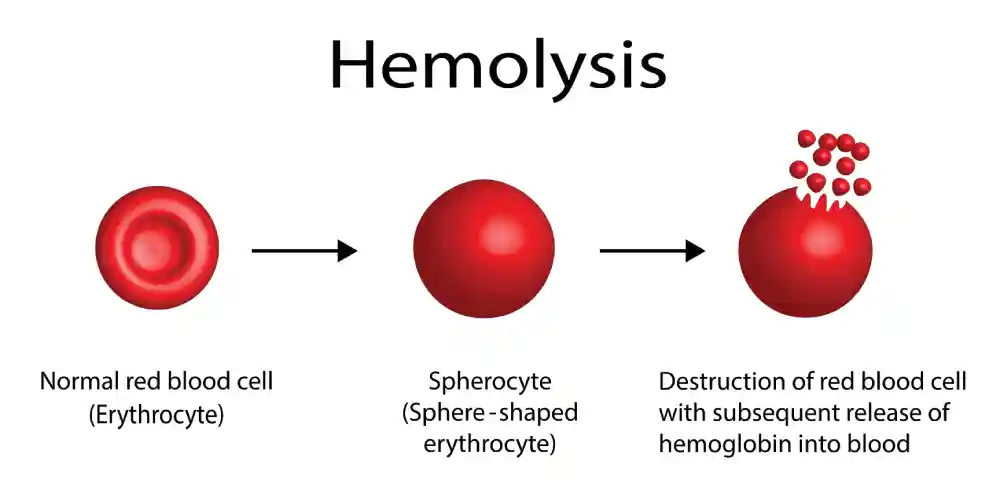B) Increased destruction of red cells in the body is called hemolysis and is seen in the following conditions :

- Enzyme defects in RBCs: Red cells have different enzymes that help the cell deal with oxidative stress. The 2 most common forms of enzyme deficiencies produce a condition called favism whether due to glucose 6 phosphate dehydrogenase deficiency or pyruvate kinase deficiency.
- Structural abnormalities in RBCs: RBCs are biconcave structures that can fold into themselves on passing through narrow capillaries. If the structure is disturbed due to defects in hemoglobin synthesis, they become rigid and their passage becomes difficult. This causes the corpuscles to be destroyed in the narrow sinusoids of the spleen. This is seen in the following conditions:
- Thalassemia Both alpha and beta thalassemia patients suffer from various degrees of anemia. The disease is prevalent in the Mediterranean region.
- Sickle cell anemia: This condition is prevalent in patients from African ancestry.
- Spherocytosis: In this condition, the red corpuscles become spheres rather than biconcave discs. It rarely causes significant anemia.
- Autoimmune diseases: In many patients with autoimmune diseases, antibodies develop against blood elements whether red corpuscles, white blood cells or platelets. The most common autoimmune disease that can cause significant anemia is systemic lupus, but it can also be found in rheumatoid arthritis. Autoimmune hemolytic anemia is another disease that can result from viral infections or some blood cancers or lymphomas.
- Infections: Some infections can cause destruction of RBCs. The most famous and common of which is malaria.
- Drugs: Some drugs can cause anemia by inducing the destruction or RBCs. They include antibiotics such as ceftriaxone, antipyretics such as diclofenac and even the antiparkinsonian drug levodopa. Some cause the destruction of RBCs via the formation of antibodies while others cause non-antibody mediated mechanisms.
- Hypersplenism: Due to some of the above causes such as thalassemia, the spleen may enlarge and at a certain point, this enlargement can cause the development of a condition known as hypersplenism. In this condition, the spleen becomes “aggressive” towards all types of cells whether healthy or deformed which can cause one or more types of blood cells to be destroyed in excess and their numbers to fall. Severe anemia and platelet deficiencies may result.
Back to Top

